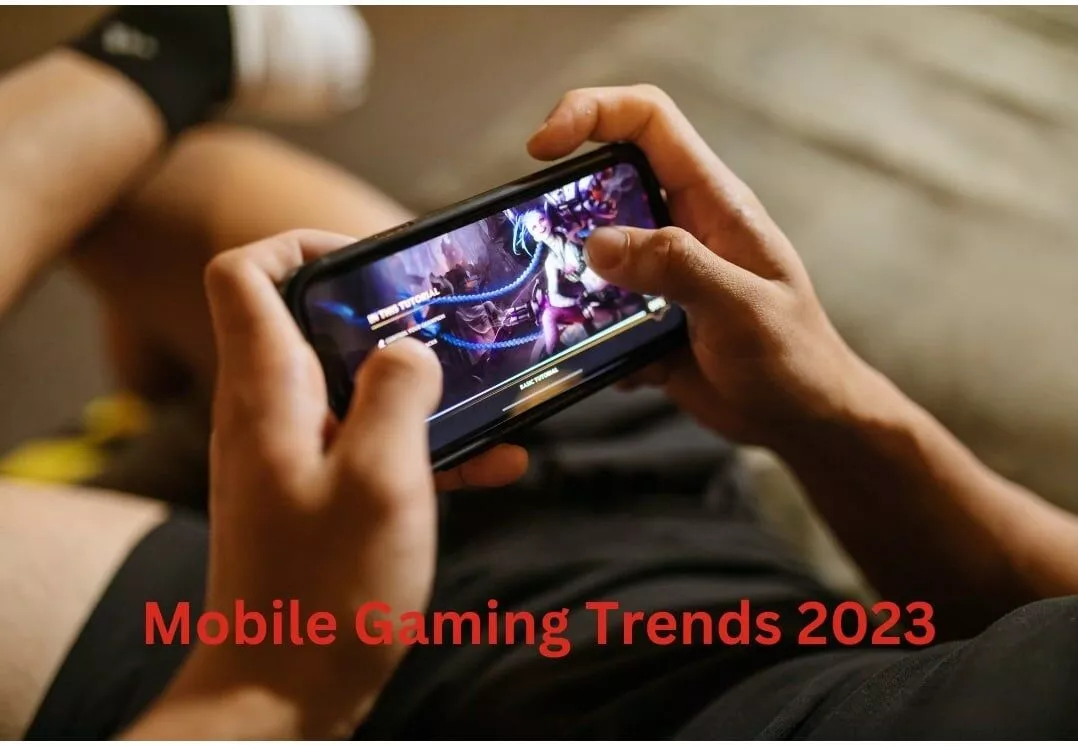
Mobile Trends
The mobile gaming industry continues its explosive growth, and new technologies are transforming how people interact with games. 2023 is looking to be another great year for gaming. With web 3.0 play-to-earn model gaining traction and AR/VR technologies seeing wide adoption, lots of opportunities present for all stakeholders in the gaming space.
According to Juniper Research, the mobile gaming industry will exceed $200 billion in 2023 with mobile and cloud gaming leading the growth.
Mobile gaming is a fastest growing segment of the global gaming industry with a lot of potential for growth. It is estimated that the annual number of gamers will exceed 2.7 billion in 2023.
Mobile game revenue has already eclipsed console games. Mobile gaming revenue is growing faster than any other form of gaming. In fact, it’s already overtaken traditional console games in terms of revenue generation! As a result, companies like Nintendo and Sony have started releasing their most popular titles on smartphones as well.
Mobile gaming is a global phenomenon, with more than 2 billion people around the world now playing mobile games on their phone or tablet at least once per day. As a result, mobile games are generating an increasing amount of revenue for developers and publishers and becoming increasingly profitable as well. The industry’s rapid growth has made it one of the most competitive industries in any sector, with hundreds of companies across multiple countries vying for market share every year.
If you’re looking to get into this booming industry, here are some important trends that you’ll need to keep an eye on:
- The growth of esports: Esports, or competitive video gaming, is becoming increasingly popular, and mobile games are a key part of this trend. Many mobile games now have competitive multiplayer modes, and there are even professional leagues and tournaments for mobile games.
- In-game monetization: The increasing importance of in-game monetization: In-game monetization, or the use of microtransactions and other methods to generate revenue within a game, is becoming an increasingly important part of the mobile gaming industry. This trend is expected to continue as more and more developers look for ways to monetize their games.
This trend offers brands the opportunity to not only to promote their brands but also generate revenue from doing so by selling brand merchandise. This is a sustainable model that will help brands fund further marketing activities and recoup investments in branding through monetization of their brands.
- AR/VR: Augmented reality (AR) games like Pokemon Go have driven innovation and interest in the space and will continue to do so in the coming years.
The most popular mobile games are those that are fun, engaging and social. Pokemon Go is an example of an augmented reality (AR) game that has demonstrated the potential for success in this space. The game also inspired a number of other AR titles such as Ghostbusters World, Jurassic World Alive and Harry Potter: Wizards Unite—all of which have been downloaded over 10 million times since their release.
As technology advances and devices get more powerful, software developers will continue to create more immersive experiences by combining real-world elements with digital content through AR technology.
- Cloud Gaming: Cloud gaming allows users to stream games over the internet, rather than downloading and installing them on their devices. This technology is still in its early stages, but it has the potential to revolutionise the mobile gaming industry by making it easier for users to access a wide range of games on their devices.
- The Metaverse and Web 3.0 Gaming: gaming experiences on the blockchain took a big leap in 2021-2022 and the trends continues to grow with so many play-to-earn or subscription-free models appearing which are supported by in-game transactions. Web 3 gaming allows the creation of decentralised, blockchain-based games that operate on a distributed network rather than on a central server. These games can offer players true ownership of in-game assets, as well as the ability to trade or sell those assets on external marketplaces.
Web 3 technologies also enable new types of multiplayer experiences, such as decentralised virtual worlds or persistent online games that are not controlled by a single company
- The rise of Hyper-casual games: Hyper casual games are a type of mobile game that are designed to be easy to pick up and play, with simple controls and mechanics that can be understood quickly. These games are usually designed to be played in short bursts with the goal of keeping players coming back for more.
Some common features of hyper casual games include:
- Simple, intuitive controls: Hyper casual games often have simple one-touch or swipe-based controls that are easy to learn and use.
- Hyper casual games often have minimalistic graphics that are designed to be easy to process and run smoothly on a wide range of devices.
- Endless gameplay: Many hyper casual games have an endless or “endless runner” style of play, in which the player must continually progress through increasingly difficult challenges.
- Fast-paced gameplay: These games are designed to be played quickly, with fast-paced action and short levels that can be completed in a matter of minutes.
Popular hyper casual games include; Bridge Race, Tall Man Run and Fill The Fridge.
- Direct-to-Consumer marketing: AR games like Pokemon Go are changing how brands market to consumers and are making gaming a more social experience. The popularity of the game has opened up new opportunities for brands. AR games like Pokemon Go are changing how brands market to consumers and are making gaming a more social experience.
Because these games offer a lot of fun for people who play them, it’s easy for companies to use them as an opportunity to reach customers in an engaging way.
- Increased use of artificial intelligence: AI is being used in a variety of ways in mobile games, including as non-player characters (NPCs) and to optimise game play. These characters behave interactively in response to player action and can enhance the engagement and level of interaction in a game. Ai I also used for generating content for games like game levels, difficulty and elements as you advance in a game.
In strategy games, AI-controlled opponents can make decisions about how to attack or defend based on their resources and the player’s actions. In role-playing games, AI-controlled allies or enemies might use different tactics or abilities depending on the situation.
- Smart Targeting: Mobile gaming companies are becoming more sophisticated with their advertising strategies through smart targeting and predictive modelling tools. These companies have learned that the best way to increase revenue is by using data about their users to target specific groups of people who are most likely to spend money on in-app purchases. They can also determine which users are most likely to buy something from an ad and then automatically optimise their ad spends based on these predictions.
In addition, gaming companies are using data from game interactions, such as what level a player has reached or how long they’ve spent playing a particular game, to create predictive models that help them identify new customers based on their play style. This allows them to target gamers who haven’t yet downloaded any games but would be interested in doing so if they were exposed through advertising channels such as social media or online ads.
In-game ads fit seamlessly into mobile game formats which can make them more effective at engaging customers than TV or web ads for some companies.
Conclusion:
Mobile gaming is an exciting industry to watch, and it’s only going to continue growing in the coming years. Newer technologies like AR and VR are enabling new types of games that can make gaming more social, interactive, and immersive than ever.
Brands are also starting to get involved in the space by creating their own mobile games with advertising built into them so they can reach a wider audience than traditional ads media would allow. If you are looking to extend the digital footprint of your brand, the mobile gaming space is definitely a space to watch. Whether through programmatic ads in games or by creating gaming experiences for your audience, the gaming space offers unparalleled engagement of your audience. Keeping up with these trends will help you uncover growth opportunities for your brand.



